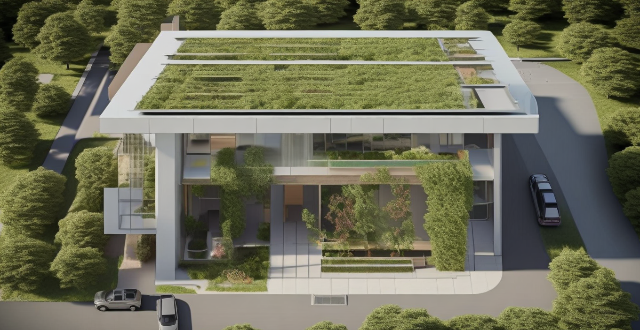Energy-efficient buildings are designed to reduce energy consumption and minimize their impact on the environment. Some of the most common features of these buildings include insulation, energy-efficient windows, solar panels, energy-efficient lighting, high-efficiency HVAC systems, rainwater harvesting systems, green roofs and walls, energy monitoring systems, energy-efficient appliances, and natural ventilation. These features can significantly lower heating and cooling costs, reduce the demand for municipal water supplies, and improve indoor air quality.

What are the most common features of energy-efficient buildings?
Energy-efficient buildings, also known as "green buildings," have become increasingly popular in recent years due to their environmental benefits and cost-saving potential. These buildings are designed to reduce energy consumption and minimize their impact on the environment. Here are some of the most common features of energy-efficient buildings:
1. Insulation
Insulation is a key feature of energy-efficient buildings. It helps to reduce heat loss in winter and heat gain in summer, which can significantly lower heating and cooling costs. There are various types of insulation materials available, including fiberglass, cellulose, and foam board.
2. Energy-efficient windows
Energy-efficient windows are designed to minimize heat loss and gain through the windows. They typically have multiple layers of glass with air or gas between them, which helps to insulate the building. Some windows also have special coatings that reflect sunlight away from the building.
3. Solar panels
Solar panels are becoming increasingly common in energy-efficient buildings. They convert sunlight into electricity, which can be used to power the building's lights, appliances, and other systems. Solar panels can also generate excess electricity that can be sold back to the grid.
4. Energy-efficient lighting
Energy-efficient lighting systems use less energy than traditional lighting systems while providing the same level of illumination. LED lights are particularly popular because they use less energy and last longer than other types of bulbs.
5. High-efficiency HVAC systems
High-efficiency HVAC (heating, ventilation, and air conditioning) systems are designed to maximize energy efficiency while maintaining indoor comfort. These systems typically use advanced technologies such as variable speed drives and programmable thermostats to reduce energy consumption.
6. Rainwater harvesting systems
Rainwater harvesting systems collect rainwater from rooftops and other surfaces for later use. This water can be used for irrigation, toilet flushing, and other non-potable purposes, reducing the demand for municipal water supplies.
7. Green roofs and walls
Green roofs and walls are covered with plants and other vegetation, which can help to insulate the building and reduce heat gain. These features also provide additional environmental benefits by absorbing pollutants and producing oxygen.
8. Energy monitoring systems
Energy monitoring systems allow building managers to track energy usage in real-time, identifying areas where energy consumption can be reduced. These systems can also alert building managers to potential problems before they become major issues.
9. Energy-efficient appliances
Energy-efficient appliances, such as refrigerators, washing machines, and dishwashers, use less energy than traditional models while providing the same level of performance. Using these appliances can significantly reduce energy consumption in a building.
10. Natural ventilation
Natural ventilation involves using windows, doors, and other openings to allow fresh air into a building. This can reduce the need for mechanical ventilation systems, which consume energy to operate. Natural ventilation can also improve indoor air quality by removing stale air and introducing fresh air into the building.